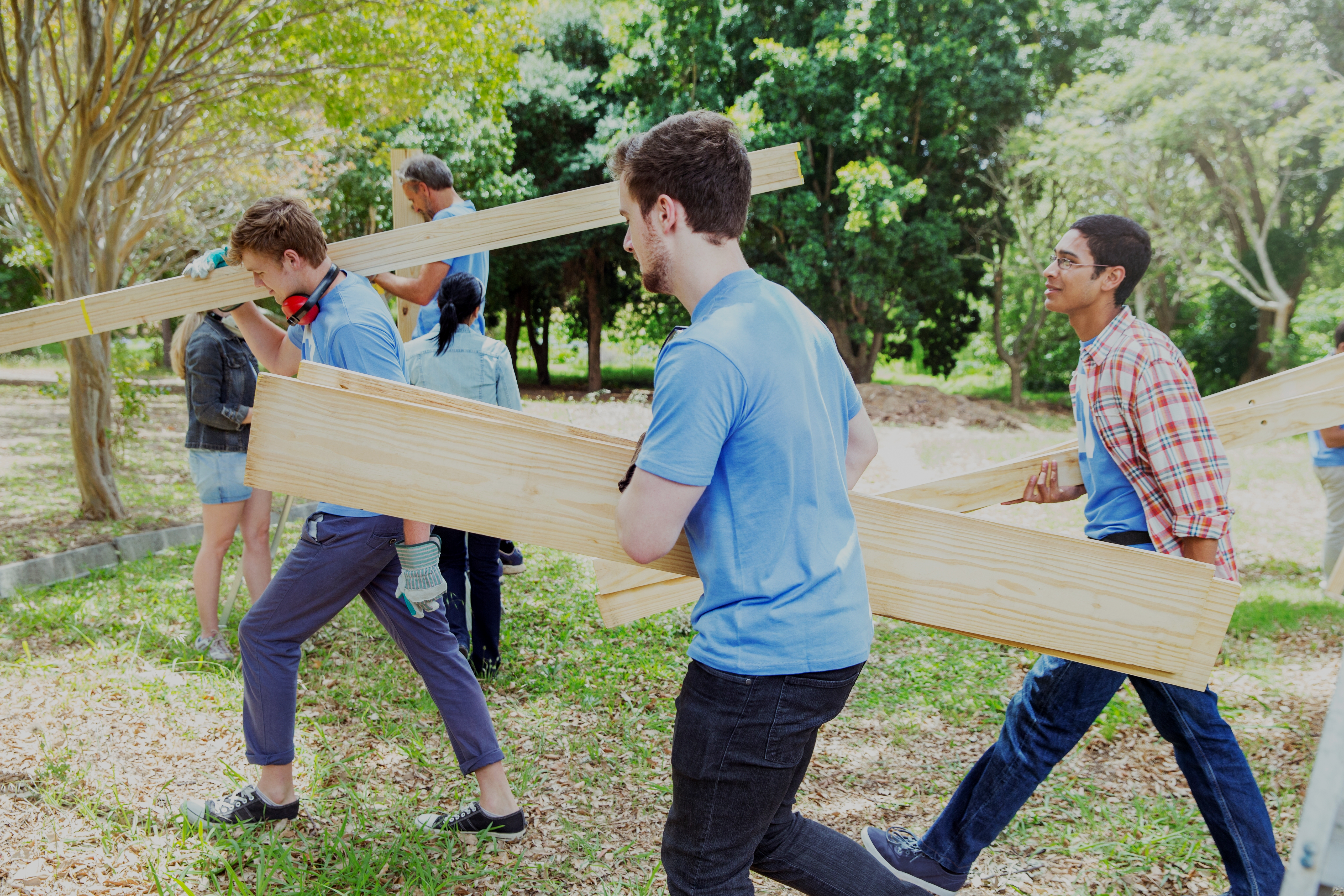Every construction project, big or small and simple or complicated, has some degree of social impact on the surrounding area. A closed road, noise pollution or a temporarily turned off water-supply are examples that might come to mind. But social impact does not always need to be negative and or cause hindrance to those around.
You have control over the degree of social impact that your construction project has on the community surrounding it and on how your actions are perceived. And it might surprise you to hear that the results of your efforts are measurable and quantifiable as well. That means you can make reports, make them visible, and show them off.
Read on to see how you can take control over how you measure the social impact of your project, and turn it into something positive for everyone.
What is social impact?
The term ‘social impact’ is broad. It can be defined as: the effect of something (in this case a construction project) on people and communities. This sounds vague, but limiting it to construction projects already makes it more tangible.
Every hit on a pole that you drive makes a sound hearable in the surrounding area. This may affect someone who works night shifts or who is studying for an exam. This is an example of negative social impact from a construction site.
A visit to the local school, on the other hand, where you explain what you are doing and you make the kids excited for the construction industry, has a very positive social impact. You also create understanding for your construction project, as the community’s children tell their parents in detail about what they learned.
Your building site will always influence the community around it negatively to some degree. You came into their lives unasked and created a change in their surroundings. By measuring social impact and making sure that these negatives are countered with the positives, you will create a happy and cooperative community to work with.

2 ways of measuring social impact
How do you measure social impact? How do you measure something that is based on a feeling and attitude towards your project and apparently not on quantifiable data? You would be surprised how measurable the social impact of construction projects is.
Let’s look at 2 ways in which you can measure social impact and quantify the results.
1. Measure social impact yourself
Measuring the social impact that your construction project has on the community is no different from measuring the success of a KPI or an improvement plan within your business. For every scheduled activity you can also set SMART objectives with values to measure if it had the desired impact.
The difference with other projects is that what you want to measure does not seem quantifiable. How do you take something as intangible as social impact and change it into concrete numbers? There are several ways you can do that.
Let’s start with a few practical examples.
- Set up a questionnaire where community members need to give a score of 1 to 10. It is useful to use the same questionnaire for every action you want to measure, to make the data comparable.
- Use a digital tool, like an interactive screen or online forms, to get quantifiable feedback from community members.
- If you have organised a weekly coffee morning or yoga session, then you can measure the social impact by, for example, counting the number of attendees. As your mornings get more popular, the numbers will go up, a clear sign of success and social impact.
Before you start measuring social impact yourself, you need to set up a plan. You need to have comparable data, clear and measurable goals, and a schedule where all the activities are planned and the way they are measured explained.
You also need to have a means to collect the results, to make them presentable and usable. Use the same metrics for all the (community engagement) activities you want to measure and you collect valuable, qualitative and comparable data. Methods like surveys, case studies, the Theory of Change, outcome harvesting, logic models, interviews, Social Return on Investment (SROI), and participatory approaches all help you measure the social impact your construction project had or has.
2. Use measuring tools
Why would you try to invent the wheel when there are community engagement tools like SitePodium which do everything for you? These tools are set up so that you can communicate and exchange information with the community around your building site. And on top of that, they often help you get a contract and be ahead of your competition if you mention them in your presentation for tender.
SitePodium, for example, has a newsfeed where members can respond to your posts. Measure the amount of likes or dislikes for quantifying social impact. You can raise a poll or ask a question for feedback. It also has a reporting section, where data is collected and presented to you in a handy format. Here you create your own reports, which you can use as proof of the positive social impact your project had on the community.
The disadvantage of these tools is that they are usually a bit simpler than when you would make your own social impact reporting plan. On the other hand, you save yourself the time of having to set up KPIs, a scoring system, and reports by using a digital community engagement tool.

Why measure social impact?
Why would you go through all this trouble? You are only in the area temporarily and once your project is finished, you move on to somewhere else. You do not know these people and they do not know you. Why would you make an effort to measure social impact and to work so hard on positive outcomes?
There are several reasons why measuring social impact is useful, both now and in the future.
- Community engagement and social impact of construction projects gets a lot of attention now. There is the Considerate Constructors’ Scheme but your potential clients will also look for it. With presentable data, you are able to share your successes of the past during a tender presentation, to increase your chances of winning the contract.
- With data you can measure the results of your efforts. That way, you can make plans on how to proceed. You focus less on the initiatives with little effect and more on the initiatives that were successful.
- By measuring social impact, you learn. Those lessons, you can use in future projects. You can improve your templates, plans, KPIs, and questionnaires, and use them again. As you move on, you will get better and better at measuring social impact, and thus working on community engagement in the future.
Measuring social impact with SitePodium
SitePodium is an ideal app for enhancing community engagement around your construction project. And measuring social impact is an important part of that. Because, if you are making the effort to connect to the community surrounding your building site, you also want to make that visible and show it off.
SitePodium is a comprehensive tool for carrying out and measuring community engagement. It quantifies your efforts and gives you several ways to collect feedback from your subscribers and stakeholders. It collects this data for you, so that you can pull out the reports you need to measure the social impact of your construction project. As you can see in our client cases, it has been useful already for many of our clients before you.
Does this sound interesting to you? We are happy to show you with a demo what SitePodium can do for your construction project. Should you rather read about the app at your own leisure, then you can download our brochure as well. Alternatively, contact us directly to exchange ideas and to find out more about what SitePodium can offer your next building project.

